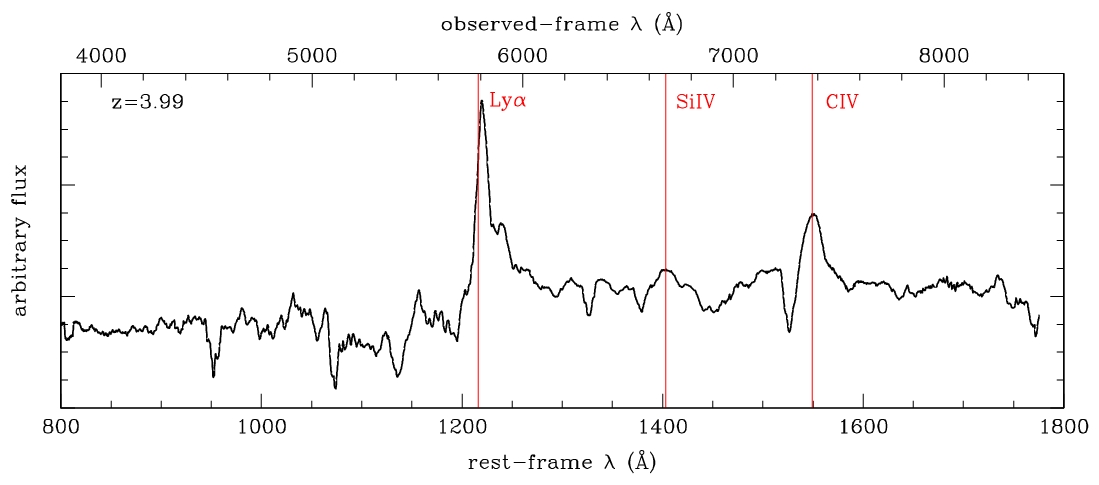Quasars behind the Magellanic Clouds
We present the discovery of 713 new quasars behind the Magellanic Clouds. All of them were selected from the OGLE-III database and have long-term, high cadence light curves from OGLE-III and growing for OGLE-IV. They were selected, observed and spectroscopically confirmed in the follow-up project - The Magellanic Quasars Survey, where we used the 4-meter Anglo-Australian Telescope for spectroscopy. As a by-product we will separately present a catalog of a 1000 dusty stars in the Magellanic Clouds.
The new quasars expand the existing sample of quasars known behind the Magellanic Clouds by an order of magnitude! They are the largest and best monitored sample of quasars available to date. They will serve as tools to study AGN variability properties and in finding the connection between AGN variability and their physical properties. Their second key use will be to study proper motions of the Magellanic Clouds, where they can serve as astrometric fixed stationary points. Finally, we provide 50 AGNs brighter than I<18 mag, that are suitable to study interstellar and intergalactic extinction.
 |
| Quasars behind the LMC. Small filled squares represent new quasars, open circles represent known quasars, while open circle with a square inside is a known quasar that we confirm. White squares show OGLE-III fields, while large white circles reflect the field of view of a single spectroscopic field from the Magellanic Quasars Survey. |
 |
| Quasars behind the SMC. |
 |
| Rest-frame specta of 50 out of 713 new quasars discovered behind the Magellanic Clouds. Vertical lines with labels mark major emission lines. For each quasar we show its redshift in the left column. |
 |
| OGLE-III light curves of four exemplary quasars. There are approximatelly 500 epochs in the I-band and 100 in the V-band from OGLE-III for each quasar. |
 |
| Spectrum of the most distant object continously monitored by OGLE (identified to date). It is a quasar named MQS J004245.81-742531.5 (behind the SMC) at the redshift of 3.99. It took light 12.09 billion years to reach Earth. The Universe was 1.58 billion years old when the light bagan its journey. The optical brightness of the quasar is V=20.3 mag and I=18.7 mag. Vertical lines and labels mark major emission lines. |
Data from the survey are available to the astronomical community from The Magellanic Quasars Survey website.
Please note, however, the OGLE-III light curves for these quasars have not been released.
PLEASE cite the following paper when using the data or referring to these OGLE results:
Kozłowski et al. 2013, ApJ, 775, 92 (arXiv:1305.6927).
Any comments about the data and the form of their presentation are welcome
as they can improve the future releases of transient events detected by the
OGLE collaboration. Send your messages
to this address.
 back
back